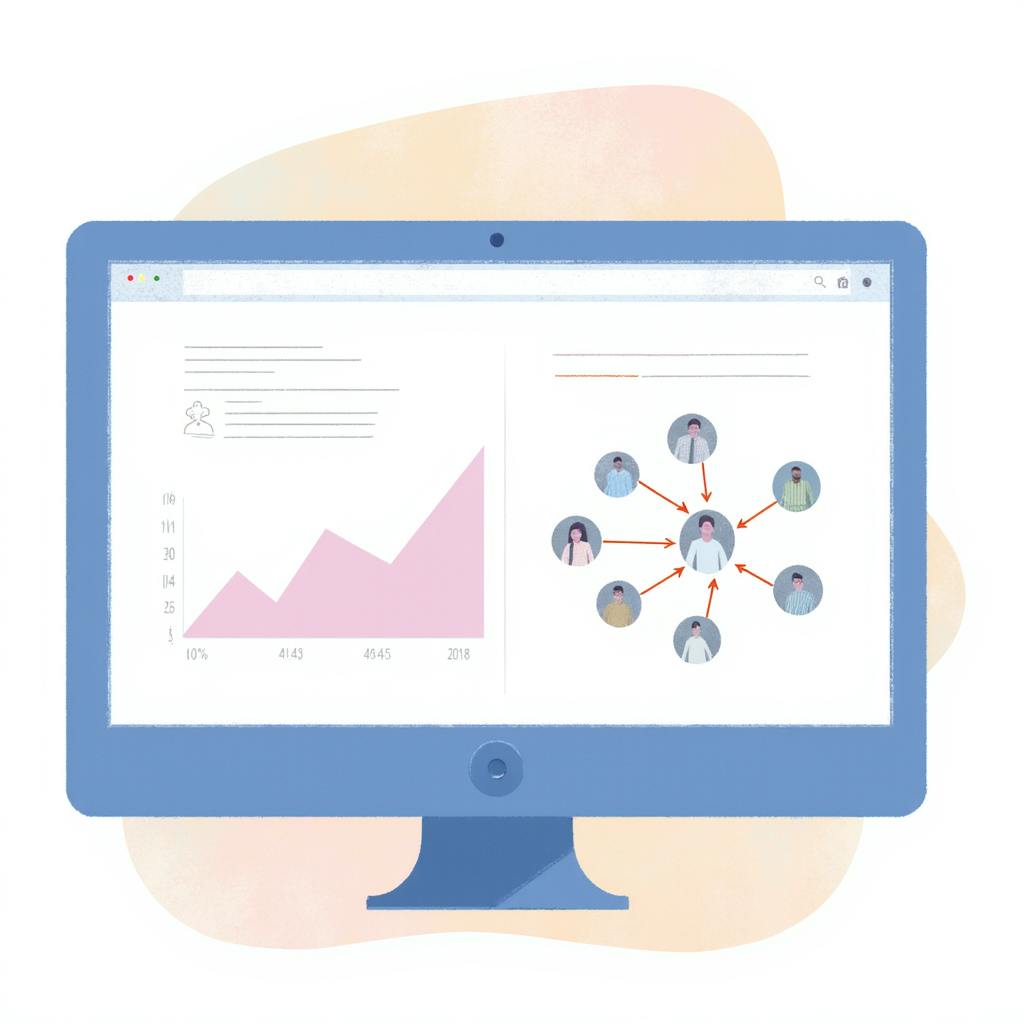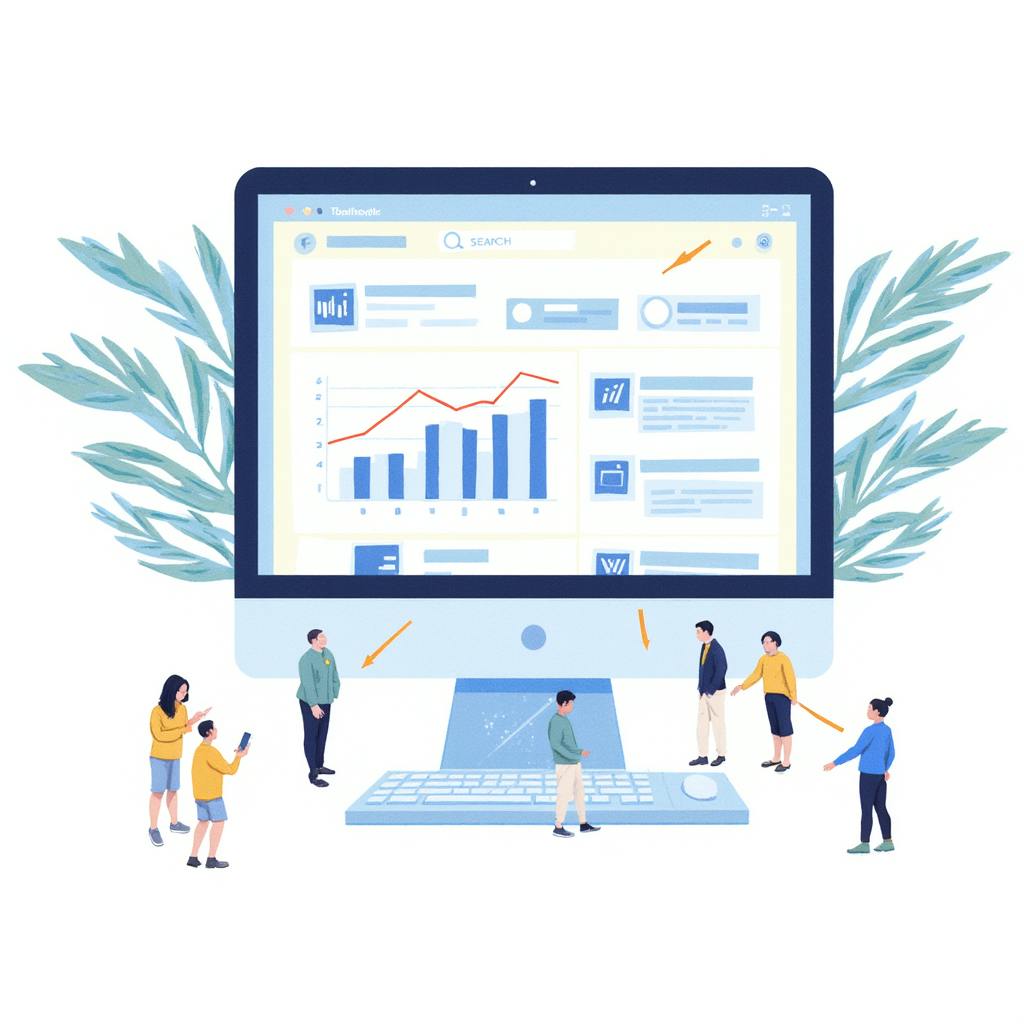In today's digital landscape, businesses are constantly striving to increase organic traffic and enhance their online presence. Understanding the organic traffic meaning and its significance is crucial for any business looking to thrive online. Simply put, organic traffic refers to visitors that land on your website as a result of unpaid search results on search engines like Google. Unlike paid traffic, which is driven by advertising, organic traffic is the fruit of effective search engine optimization (SEO) strategies.
Understanding Organic Traffic
The organic traffic definition is straightforward: it represents visitors who come to your site through search engine results without the intervention of paid ads. Organic search traffic is highly valuable as it often indicates that a visitor has genuine interest in your content, product, or service.
How to Increase Organic Search Traffic
Improving your organic search traffic requires a strategic approach involving various SEO techniques. Here’s how you can effectively increase organic traffic:
- Optimize for Relevant Keywords: Start by conducting thorough keyword research to identify terms and phrases that your target audience is searching for. Use tools like Google Keyword Planner, SEMrush, or Ahrefs to find high-volume, low-competition keywords. By integrating these keywords naturally into your content, titles, and meta descriptions, you’ll improve your chances of ranking higher in search engine results pages (SERPs).
- Create High-Quality, Engaging Content: Content is king in the world of SEO. To increase organic traffic, focus on producing high-quality, informative, and engaging content that provides genuine value to your audience. Content should be well-researched and address common questions or problems faced by your audience. Incorporate LSI (Latent Semantic Indexing) keywords, which are semantically related terms that help search engines understand your content better.
- Improve On-Page SEO: On-page SEO refers to optimizing individual pages to earn more relevant traffic. This includes optimizing your title tags, headers, URL structure, and incorporating internal links. Make sure your website is mobile-friendly and has a fast loading speed, as these are critical ranking factors.
- Enhance User Experience: A seamless user experience is key to retaining visitors and reducing bounce rates. Ensure that your website navigation is intuitive and that your content is easily accessible. Consider user feedback and analytics to continually improve site usability.
- Build a Strong Backlink Profile: Backlinks, or inbound links from external sites, are a critical factor in determining your site’s authority and ranking potential. Engage in link-building strategies like guest blogging, outreach, and collaborations with industry influencers to increase your backlink profile.
- Utilize Social Media and Content Promotion: While social media isn’t a direct ranking factor, it helps in driving more traffic and can indirectly boost your search engine rankings. Share your content on social platforms to reach a wider audience. Encourage social sharing by creating easily shareable content.

AI made with Dean Jones
Frequently Asked Questions
What is the Difference Between Organic and Paid Traffic?
Organic traffic is free and generated through search engine results. In contrast, paid traffic comes from users clicking on ads that a company has paid for on search engines or other advertising platforms.
Why is Organic Traffic Important?
Organic traffic is important because it is sustainable and cost-effective in the long term. It tends to have a higher conversion rate because it draws visitors who are actively searching for the information or products you have to offer.
How Long Does it Take to See an Increase in Organic Traffic?
SEO is a long-term strategy, and results can vary depending on factors like industry competition and your resource investment. Generally, you may start seeing noticeable changes in three to six months, but significant gains often take longer.
FAQ on Increasing Organic Traffic Through Smart SEO
What is organic traffic and how can it be increased?
Organic traffic refers to the visitors who land on your website from unpaid search results, mainly through search engines like Google, Bing, or Yahoo. Unlike paid traffic, organic traffic is built over time through strategic efforts to improve your website’s ranking in search engine results pages (SERPs).
How to Increase Organic Traffic
- Keyword Research: Identify relevant and high-volume keywords that potential customers are searching for. Use tools like Google Keyword Planner or SEMrush to aid in this process.
- High-Quality Content: Create valuable, informative, and engaging content that addresses the needs and concerns of your target audience. Regularly update your content to keep it fresh and relevant.
- On-Page SEO: Optimize your web pages by using proper title tags, meta descriptions, headings, and alt text for images. Ensure content is organized and easy to navigate.
- Technical SEO: Improve your website’s technical aspects such as page speed, mobile-friendliness, and crawling and indexing issues.
- Backlink Building: Secure backlinks from reputable sites to bolster your website’s authority, which can improve search rankings.
- Social Media Engagement: While social media doesn’t directly impact SEO, it can drive traffic to your site which can result in increased sharing, leading to higher authority and improved rankings.
How does smart SEO contribute to the increase in organic traffic?
Smart SEO involves employing thoughtful, well-researched, and comprehensive strategies to enhance website visibility in search engine results. Here’s how it plays a critical role in increasing organic traffic:
- Improved Search Rankings: Smart SEO increases your website’s relevance and authority in the eyes of search engines, helping you achieve higher rankings for pertinent keywords.
- User Experience Enhancements: A key component of smart SEO is optimizing the user experience, including site architecture and page speed, which are factors that search engines consider in rankings.
- Content Optimization: Well-optimized content that is aligned with user intent attracts and retains visitors, as well as encourages sharing and backlinking, further increasing organic traffic.

AI made with Dean Jones
What strategies can be used to optimize SEO for boosting organic traffic?
Content Strategy Optimization
- Focus on creating cluster content by developing comprehensive guides linked to from various related topics that explore keywords in-depth.
- Use long-tail keywords to capture more specific queries and tap into niche markets.
Technical SEO Improvements
- Regular audits to fix broken links, 404 errors, and duplicate content.
- Implement structured data markup to enhance SERP visibility with rich snippets.
Enhanced Mobile SEO
- Optimize your website for mobile usability to tap into the growing number of mobile users searching online.
- Use Accelerated Mobile Pages (AMP) to load content faster on mobile devices.
Local SEO Optimization
- Optimize your Google My Business listing and ensure consistent Name, Address, and Phone Number (NAP) information across local listings and directories.
Analytics and Adjustments
- Use tools like Google Analytics and Search Console to gather data on your organic performance and make informed adjustments to your strategy.
What are the benefits of an increase in organic traffic through smart SEO?
- Cost-Effective Growth: Unlike paid advertising, which requires continuous investment, smart SEO provides long-term results without ongoing costs.
- Sustainable Results: High organic rankings are more stable and less affected by the fluctuations seen in paid advertising campaigns.
- Brand Authority and Trust: Higher search rankings contribute to perceived authority and trustworthiness among consumers, leading to better brand recognition.
- Higher Conversion Rates: Organic traffic often has higher conversion rates as it brings in users actively searching for relevant solutions, making them more likely to engage and convert.
- Competitive Advantage: Achieving a strong SEO presence can help differentiate your brand from competitors, solidifying your market position.
By executing smart SEO strategies, businesses can see a significant increase in organic traffic, leading to improved online visibility, more engaged audiences, and enhanced overall business success.
Conclusion
Increasing organic traffic is a multifaceted process that requires time, dedication, and strategic planning. By optimizing for relevant keywords, creating high-quality content, and improving both on-page SEO and the user experience, you can significantly enhance your organic search traffic. Additionally, building a robust backlink profile and leveraging social media will further support your efforts in increasing audience reach. Implementing these smart SEO tactics will not only improve your site’s visibility in search engines but also build a solid foundation for sustained organic growth.

